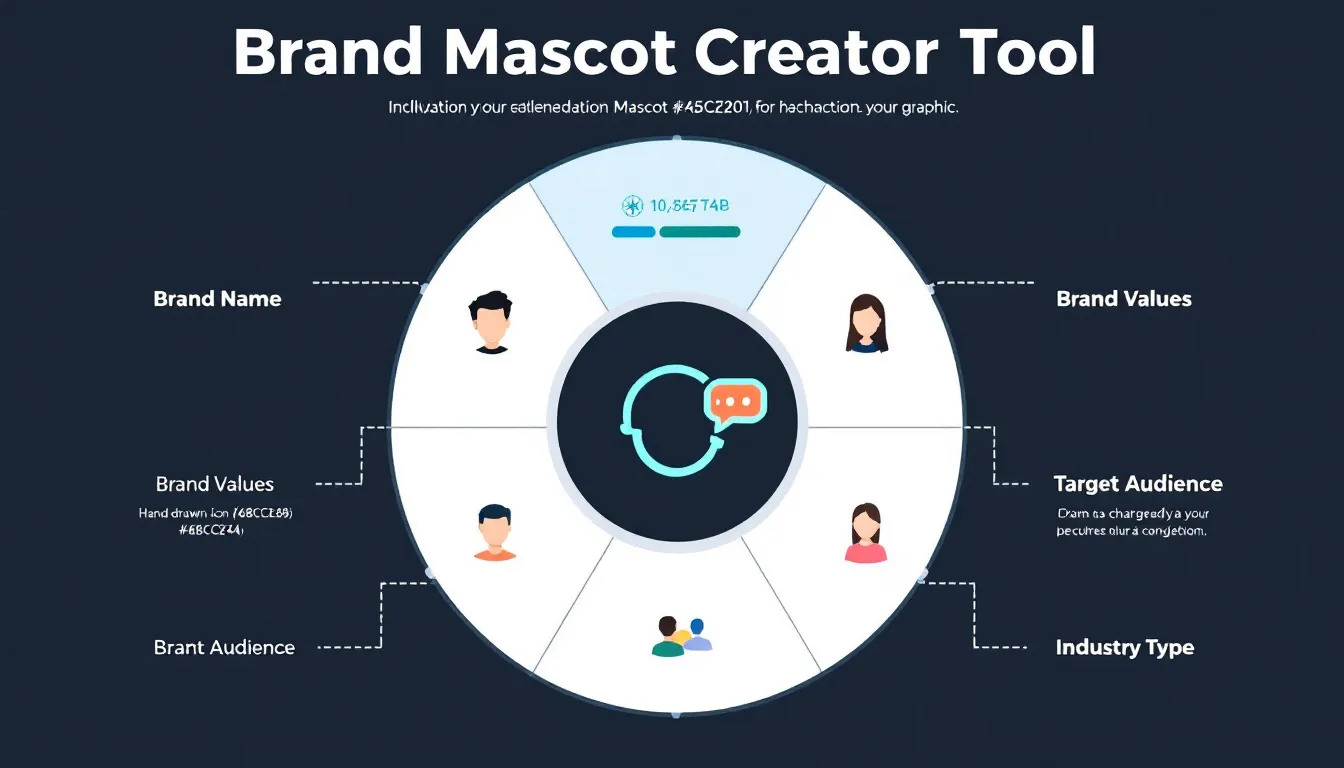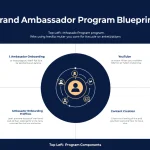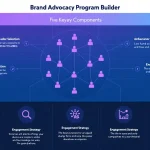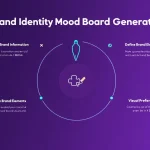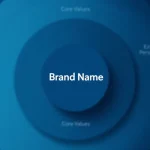Is this tool helpful?
How to Use the Brand Mascot Creator Tool Effectively
1. Brand Name Field
Type your brand’s official name as it appears in your business documents. Here are two examples:
- “Blue Harbor Adventures” – A travel and outdoor excursion company
- “TechNest Solutions” – An IT service provider
2. Core Brand Values
Note 3-5 key principles that describe your brand’s identity. Sample inputs include:
- “Sustainability, Trustworthiness, Community Focus, Innovation”
- “Transparency, Efficiency, Customer Support, Creativity”
3. Target Audience Description
Give detailed demographic and lifestyle details for your ideal customers. For example:
- “Young professionals aged 25-35, urban residents, interested in smart home technology”
- “Retirees 60+, active lifestyle, value health and wellness products”
4. Industry Type
Specify your exact business sector to help the tool generate relevant mascot ideas. Examples include:
- “Renewable Energy Solutions”
- “Online Education Platforms”
5. Optional Fields to Enhance Your Mascot Concept
Provide additional details to refine your mascot’s appearance and style:
- Mascot Style: For instance, “Whimsical animal character” or “Sleek futuristic design”
- Color Preferences: Examples include “Cool blues and silvers” or “Warm autumn colors”
Introduction to the Brand Mascot Creator Tool
The Brand Mascot Creator Tool helps you design a unique and memorable mascot that represents your brand personality and values. By entering specific information about your brand, target market, and preferences, this tool generates customized mascot concepts that align with your identity.
You can use this tool to streamline the creative process, maintain consistent branding, and build stronger emotional connections with your audience. Its easy-to-use form guides you step-by-step, allowing you to generate mascot ideas quickly without needing graphic design skills.
Purpose and Benefits of the Tool
- Save time: Quickly generate mascot concepts without lengthy brainstorming sessions
- Ensure brand alignment: Your mascot will reflect your values and target audience
- Boost brand recognition: Create a consistent visual ambassador that enhances recall
- Improve engagement: Mascots help you connect emotionally with your customers
- Reduce costs: Lower early design expenses by exploring ideas before finalizing
Practical Usage of the Brand Mascot Creator Tool
This tool functions as an intelligent form that collects your input and processes it through an advanced system to generate tailored mascot concepts for your brand. It does not perform calculations but delivers creative ideas based on detailed information you provide.
How You Benefit from Using This Tool
- Custom Concepts: Generate mascot ideas that mirror your brand’s unique identity and audience.
- Easy Iteration: Experiment with different inputs to see varied mascot styles and themes.
- Actionable Output: Receive clear mascot descriptions that you can share with designers or marketing teams.
Ideal Use Cases
- New brands seeking an engaging visual ambassador for launch campaigns
- Established businesses wanting to refresh or diversify their marketing imagery
- Marketing professionals preparing mascot briefs for graphic designers
- Entrepreneurs building brand identity and storytelling around a mascot character
Key Factors for Effective Brand Mascot Design
Visual Identity Integration
A mascot should reflect your brand’s visual style, including logos, colors, and design philosophy. Using the color preferences field helps align your mascot with your broader aesthetic.
Character Personality Alignment
Define the mascot’s personality to match your brand voice—whether friendly, professional, playful, or authoritative. The core brand values feed directly into this personality.
Brand Value Representation
Each mascot element should symbolize a core brand value. For example, a green leaf character might represent sustainability or growth.
Target Audience Appeal
Design your mascot to connect with your ideal customers’ preferences, culture, and interests. Use detailed demographic descriptions in the target audience field to guide this process.
Industry Relevance
Incorporate visual cues and mascot styles that align with your industry—whether tech-savvy for IT or friendly and natural for organic products.
Benefits of Using the Brand Mascot Creator for Your Business
Strategic Brand Development
- Build consistent messaging with a recognizable mascot
- Enhance brand recall and loyalty among customers
- Create stronger emotional connections via character-driven storytelling
- Align marketing efforts with a unified brand ambassador
Time and Resource Efficiency
- Cut down on brainstorming and concept development time
- Reduce early design and consultation costs
- Simplify decision-making by comparing multiple concepts easily
Marketing and Engagement Advantages
- Adapt your mascot across digital platforms and print materials
- Boost engagement on social media through relatable characters
- Create merchandising opportunities featuring your mascot
Common Challenges Brand Mascots Solve
Improving Brand Recognition
Many brands struggle to stand out visually. This tool helps by:
- Crafting distinct and memorable mascot characters
- Embedding unique traits that differentiate your brand from competitors
- Aligning mascots to convey your industry’s core message
Connecting with Your Target Audience
Engagement gaps arise when messaging misses the mark. The Mascot Creator tool helps you:
- Match mascot traits to your audience’s demographics and values
- Include culturally relevant and relatable elements
- Build emotional resonance through appealing character design
Real-World Use Cases
Use Case 1: Fitness and Wellness Brand
Company: Elevate Active Wear
- Input Values:
- Brand Values: Strength, Motivation, Comfort
- Target Audience: Adults 20-40, fitness enthusiasts, city dwellers
- Style: Bold, dynamic mascot with an athletic look
- Result: “Flex,” a strong yet approachable human figure symbolizing energy and resilience
Use Case 2: Eco-Friendly Cleaning Products
Company: PureEarth Solutions
- Input Values:
- Brand Values: Eco-friendliness, Safety, Effectiveness
- Target Audience: Families, environmentally conscious shoppers
- Style: Soft, natural mascot with leaf motifs
- Result: “Leafy,” a gentle plant character promoting purity and trust
Frequently Asked Questions About the Brand Mascot Creator Tool
Q: How do I make my mascot appeal across multiple age groups?
Focus on universal traits like friendliness and simplicity. Include a broad age range in your target audience description to guide mascot versatility.
Q: Is it possible to generate several mascot concepts?
Yes. You can change your inputs and use the tool repeatedly to get varied mascot ideas and compare options.
Q: What’s the best way to incorporate my mascot into branding?
Start by using the mascot in social media posts and packaging, then gradually expand its presence based on audience response.
Q: What defines an effective brand mascot?
An effective mascot has a distinctive visual design, an aligned personality, and clearly represents your brand values. It stays simple and adaptable across platforms.
Q: How often should I refresh my mascot’s design?
Update your mascot every 3-5 years with subtle tweaks to keep it relevant while preserving core features that customers recognize.
Q: Can I use the mascot in global markets?
Yes, but be sure to adjust your mascot to respect cultural norms and local preferences to maintain positive reception.
Q: How can I keep mascot usage consistent?
Create a detailed style guide specifying mascot poses, expressions, and placement rules to ensure a consistent brand image.
Q: What role do colors play in mascot design?
Colors evoke emotions and influence brand perception. Use the color preferences field to select hues that support your branding goals and resonate with your audience.
Important Disclaimer
The calculations, results, and content provided by our tools are not guaranteed to be accurate, complete, or reliable. Users are responsible for verifying and interpreting the results. Our content and tools may contain errors, biases, or inconsistencies. Do not enter personal data, sensitive information, or personally identifiable information in our web forms or tools. Such data entry violates our terms of service and may result in unauthorized disclosure to third parties. We reserve the right to save inputs and outputs from our tools for the purposes of error debugging, bias identification, and performance improvement. External companies providing AI models used in our tools may also save and process data in accordance with their own policies. By using our tools, you consent to this data collection and processing. We reserve the right to limit the usage of our tools based on current usability factors.
